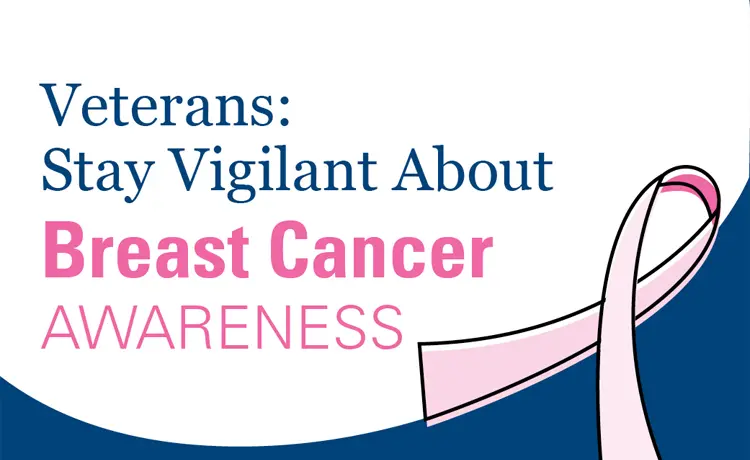Service members need to stay vigilant when it comes to their health and well-being since they put themselves in potentially harmful situations every day. October is Breast Cancer Awareness month, so this is the ideal opportunity to spread the word in your community about breast cancer symptoms, risks and the importance of early detection.
For every eight American women, one will be diagnosed with breast cancer in her lifetime. It’s important to remember that, although breast cancer is more common in women, men are also vulnerable to breast cancer and need to take the proper precautions in terms of breast cancer awareness.
Know the Warning Signs
Any time we feel something unusual in our bodies, we can go flying right into panic mode. Some breast changes can be temporary and even normal, such as breast tenderness or small lumps during your period, but some abnormalities should not be ignored. Contact your health care provider right away if you find any of the following breast cancer symptoms:- Any noticeable swelling, shrinkage, skin irritation or dimpling of the breast (especially if just on one side)
- Any change in shape or skin texture (thickening or turning scaly) on the breast or nipple(s)
- Discharge from the nipple(s), especially if the discharge is clear or bloody
- Change in nipple appearance (turning inward)
Perform Regular Self-Exams
Early detection is key for breast cancer survival. You know your body best, so self-exams are a crucial tool. Perform your breast self-exam once a month. For women, it should be done a couple of days after your period. You can perform a breast self-exam in a few ways:1. In Front of a Mirror
Keep your arms at your sides and inspect your breasts to look for any visual changes, such as swelling, skin dimpling or hardening of the skin. Next, raise your arms over your head and inspect again. Put your hands on your hips and flex the muscles of your chest. Look for any puckering or dimpling.2. In the Shower
Raise one arm over your head and, using the pads of your fingers, feel around your whole breast. Move from the outside to the center and be sure to check your armpits. Repeat on the other side. Make an appointment with your health care provider if you notice anything abnormal, such as lumps, knots or hardened skin.3. Lying down
Lie down on a flat surface and place a pillow under one shoulder and arm. Your breast tissue will spread out along your chest wall. Using your opposite hand, move your fingers gently in small circles around the breast and armpit feeling for anything out of the ordinary. Repeat on the other side.Get a Mammogram
Breast self-exams are certainly helpful in early detection, but mammograms can detect tumors before they can even be felt with your hands. This is why regular screenings are so necessary. The mammogram process may sound like a slightly uncomfortable experience, but they are worth the small amount of stress and anxiety for your piece of mind. The Veterans Health Administration guidance states:- Women aged 45-54 years should have a mammogram every year.
- Women over 55 have the option to be screened every year but can switch to screenings every second year.
- Women have the option of beginning their screenings between the ages of 40 and 44.
